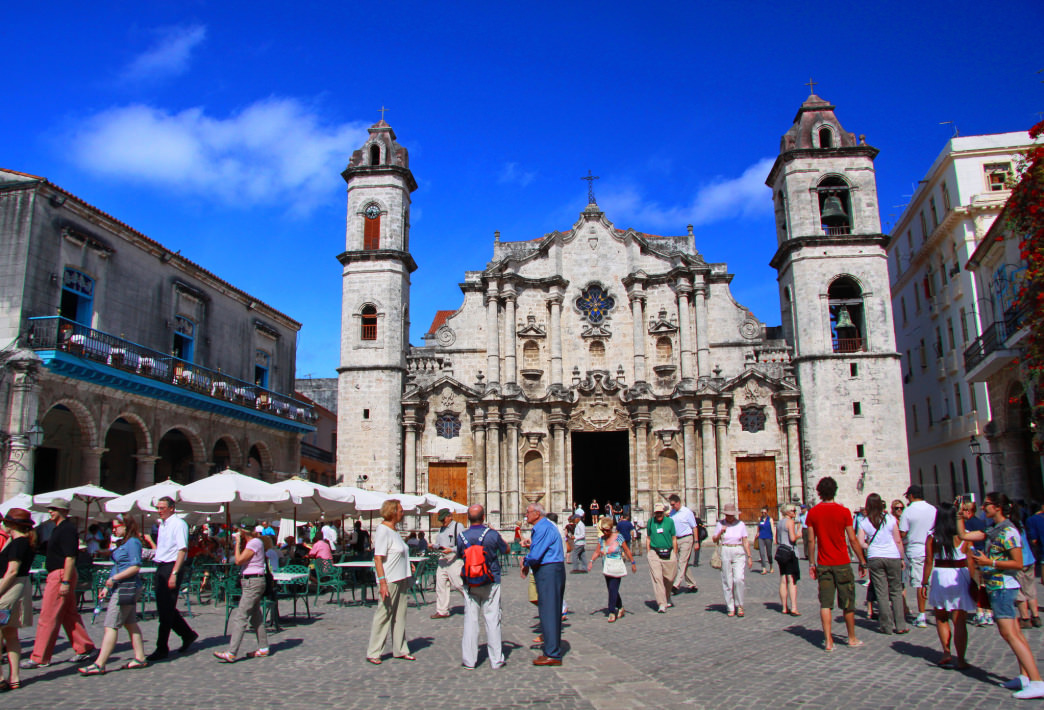It's no secret that for decades traveling to Cuba was off-limits for most Americans. But thanks to the Obama Administration lifting the trade embargo, all this changed in 2015. Now commercial airlines have begun operating non-stop flights from American soil for the first time in more than 50 years, and travelers are flocking to this Caribbean gem in droves.
But while travel restrictions to Cuba have definitely loosened, it's still technically illegal to travel to Cuba purely for "fun." You need a special permit to go. There are a number of different options, but most travelers fall into the "people-to-people permit" category and will need to travel in a group with an approved operator, like smarTours.
SmarTours applied—and received approval—for a people-to-people license in 2014 prior to Obama's historic announcement easing travel restrictions to Cuba. Among Obama's policy changes, he got rid of the requirement for tour operators (like smarTours) to have an official license. That said, it was—and still is—necessary for tour operators to provide trips that adhere U.S. government requirements. The most common type of trip is the people-to-people cultural and educational exchange trip.
You can travel to Cuba on a DIY trip, it just takes a little more work. As long as you qualify for one of the 12 allowed reasons defined by the government to travel to Cuba, you can book airline tickets directly. The most difficult aspect of solo travel may be finding lodging (there are few high-end hotels and they fill quickly). However, Airbnb is making this easier. The company has partnered with Cubans who run Casa Particulares (the Cuban version of B&Bsa) and one can now book these via Airbnb.
You will need to make sure you have a tourist visa and health insurance that will cover you in Cuba. Both of these can be purchased through the airline you book with at the airport before departure. For instance, if you fly with JetBlue, you'll pay $50 for the visa at the gateway airport, but the cost of health insurance, which is good for 30 days, is built into the price of the JetBlue ticket.
Once you arrive, here are seven must-do experiences to include in your itinerary.
1. Ride in a Classic American Car

Karl-Sebastian Schulte
It seems like time stopped in Cuba in the 1950s. At least that’s the first impression most visitors get. It mostly has to do with the cars. Up until sanctions were placed on the country in 1960, American cars flooded the Cuban market for decades. Today the streets are filled with classic vehicles from Detroit's auto-making heyday, and many are still in excellent condition. You can hire private classic car taxis–usually convertibles–to take you on a sightseeing tour around Havana. You'll find the best ones for hire outside the luxury hotels.
2. Old Town Havana

Ashu Mathura
Old Havana, a UNESCO World Heritage Site, is another must-do stop for any Cuban trip. Seek out the stories behind the stunning buildings, from 16th-century colonial squares to impressive Art Deco structures dating back to when Havana was a world financial capital and competitor of Wall Street.
3. Revolution Square

Jane Gospel
Revolution Square is dominated by a 500-foot-high monument to scholar Jose Marti, who was one of three people to overthrow the Spanish regime in 1898. This is also where Fidel Casto gave his endless speeches and where Pope Francis delivered mass on his historic visit.
4. Hemingway House

Tony Hisgett
A visit to the Hemingway House is a moving experience as well. Ernest Hemingway lived the last 22 years of his life in this hillside residence just outside of Havana. It was here that he entertained fellow writers, movie stars, and diplomats in his final years. Hemingway left Cuba in 1961, just before ties with the U.S. were severed, and committed suicide in Idaho later that year. Today old artifacts from his life can be seen in his former residence. Don't miss the working bar on site, serving up pineapple and rum concoctions with fresh sugar cane squeezed over the top.
5. Tropicana Cabaret

Christopher Lancaster
Experience another blast from the past at the Tropicana Cabaret, an open-air theater that has been delivering a Vegas-style show in Havana for some 80 years. Prior to World War III, when Havana was still a playground for the rich and famous, Nat King Cole, Carmen Miranda, and Josephine Baker headlined shows here. Today the Tropicana is definitely tourist focused, but it is also an institution that is a part of Cuban culture and tradition.
6. Muraleando

k8gris
Muraleando, also known as “The Tank,” is an abandoned water tank that used to service steam trains. Now it is a bustling community center for economically challenged neighborhood kids in Havana, offering them a place where they can learn to play music, paint, create ceramics, dance, put on theater productions and even make films. The center provides free services to some 200 children, and local art can be purchased on site.
7. Explore Trinidad

Balint Földesi
Beyond Havana, Trinidad is another major Cuban tourism attraction. It was founded in 1514 by conquistador Diego Velazquez as one of Cuba's original seven colonial cities. Today it is a UNESCO World Heritage site with a traffic-free restored historic center. Here you'll find cobbled streets lined with beautiful pastel painted buildings dating back to the 18th century. Visitors feel like they’ve stepped onto a movie set for a colonial period film. The town is set up for tourists, and art galleries, shops, private restaurants, and home-stay lodging options are all available.
Originally written by RootsRated for Craghoppers.
Featured image provided by Guillaume Baviere

 Cuba-Old-town
Cuba-Old-town